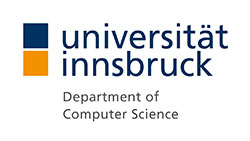Research is the core task of STI Innsbruck. Our motto is "Enabling Semantics". Find out more about our current research directions!
Incentives for Semantics

A critical mass of semantically annotated Web pages or multimedia repositories, as well as business-relevant, widely-accepted ontologies would provide a feasible basis for the development of real-world semantic applications, for the adoption of this technology at industrial level, and, why not, for the realization of the Semantic Web vision. It is therefore understandable that the question of how to create semantic content effectively and efficiently has been investigated in several areas related to semantic technologies, ranging from ontology engineering, ontology learning and ontology population, to the semantic annotation of text, media and Web services resources. The result is a maturing inventory of techniques and tools which primarily aim at a complete (or at least partial) automation of the semantic content generation and management tasks, as a means to lower costs and improve productivity. Whilst the quality of such (fully) automated approaches has constantly improved, it is still far from outweighing the manual effort savings achieved, especially when it comes to the creation of meta-data for non-textual sources or the development of a widely accepted ontology, tasks which are human-driven through their very nature. The declared aim of this project is to bridge the gap between human and computational intelligence in current semantic content authoring R&D landscape and to produce methodologies, methods and tools optimally exploiting and combining the two to enable the massive creation and feasible management of semantic contents in an economically based manner, and consequently, to provide the missing building block towards the world wide uptake of semantic technologies. Besides automated ways of semantic content creation, the participation of users who actively contribute to the semantic annotation is the main purpose of the proposed R&D project. For the attraction and motivation of users to engage and cooperate in this process, concepts of community have proven to be a critical success factor.

